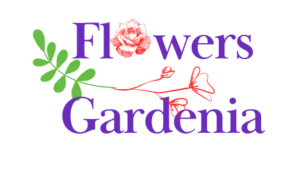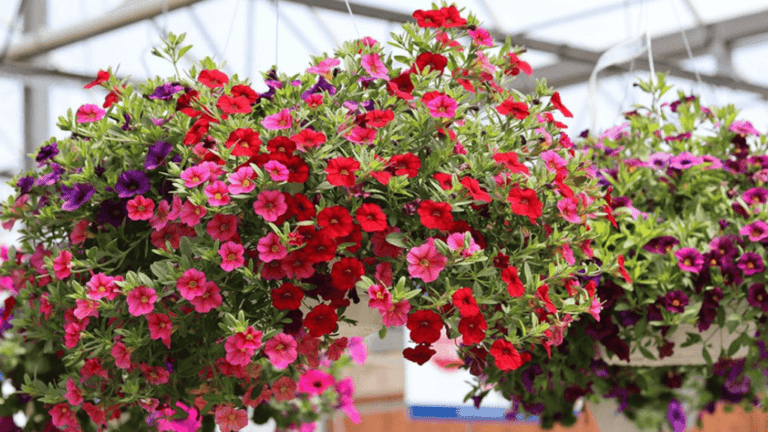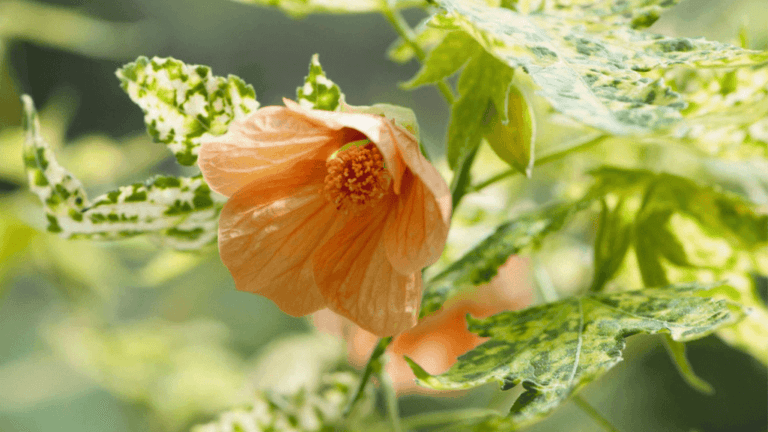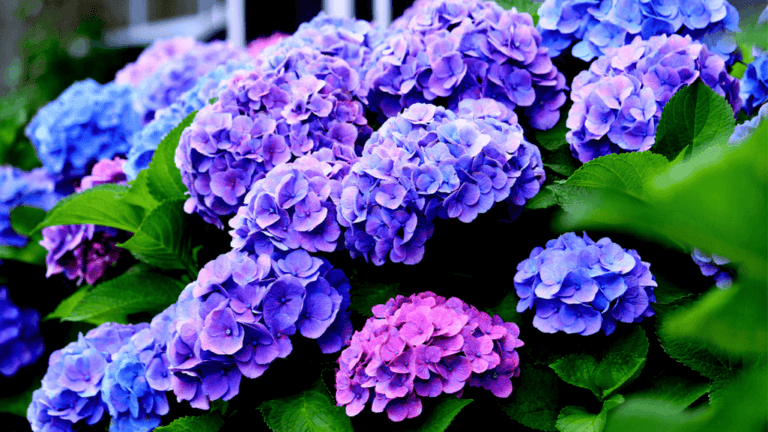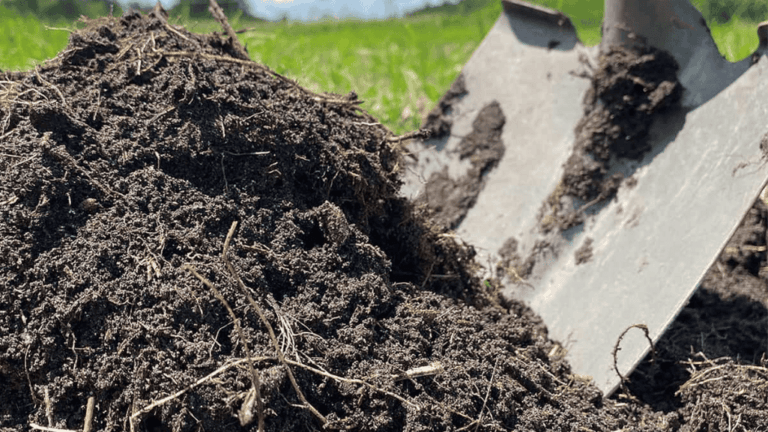Beautiful flowers gardenia Plants For Your homes

A well-designed perennial flower garden can add color and interest to your landscape with little upkeep. Perennials are the garden’s stars, coming back year after year and drawing in pollinators. With the right planning, you can create a beautiful, easy-to-care-for outdoor space.
Start by placing a perennial bed between your veggie garden and the street. This boosts your landscape’s look. Group plants together for more visual impact. Mix different plants and consider bloom times for color all season. Feel free to move and divide plants to get the perfect look.
Choosing the right plants is key to a stunning garden. Pick drought-tolerant varieties that fit your climate. Native perennials are also a good choice. They’re adapted to your area and need less water and care.
For inspiration and tips, visit Creative Vegetable Gardener. They offer expert advice to help you create a beautiful garden. Your outdoor space will be a joy to look at for years.
Key Takeaways
- Perennials are low-maintenance plants that come back every year, providing seasonal interest and attracting pollinators.
- Grouping plants together creates more visual impact than scattered individual plants.
- Consider bloom times and experiment with plant combinations to ensure continuous color throughout the seasons.
- Choose drought-tolerant and native perennials that are well-suited to your growing conditions for a more sustainable garden.
- Utilize online resources and gardening tips to guide you in creating your stunning perennial flower garden.
Benefits of a Perennial Flower Garden
Perennial flower gardens are great for both gardeners and the environment. They come in many colors, shapes, and sizes. This makes them perfect for different climates and garden styles.
By using native perennials and plants that like full sun or partial shade, you can make a garden that’s easy to care for. It will bloom all season and attract pollinators and beneficial insects.
Low-maintenance Landscaping
Perennial flower gardens are easy to take care of. You don’t have to replant them every year. This saves time and effort.
Perennials have deep roots that help them get nutrients and water from deep in the soil. This makes them strong against drought and bad weather. Their roots also help the soil by making it better and letting water move through.
| Perennial Benefits | Description |
|---|---|
| No annual replanting | Perennials come back year after year, reducing time and effort spent on planting |
| Deep root systems | Perennials have extensive root systems that access nutrients and water from deep in the soil |
| Improved soil structure | Perennial roots aerate the soil and create channels for water, enhancing soil health |
| Reduced soil erosion | Perennials help prevent soil erosion by retaining foliage after dying back, creating a protective soil cover |
Seasonal Blooms and Color
Perennial gardens change with the seasons, offering a constant display of colors. Unlike annuals, perennials bloom at different times. This keeps your garden lively and interesting all year.
You can pick perennials to match your garden’s color scheme. This makes your garden look great and reflects your taste.
Attracting Pollinators and Beneficial Insects
Perennial gardens are great for attracting pollinators like bees and butterflies. They also attract hummingbirds. By choosing native perennials, you help your garden thrive.
These plants provide food for pollinators and host beneficial insects. This helps control pests in your garden. Some good plants for pollinators include:
- Coneflowers (Echinacea)
- Black-eyed Susans (Rudbeckia)
- Shasta Daisies (Leucanthemum x superbum)
- Bee Balm (Monarda)
- Catmint (Nepeta)
Planting native perennials or those that do well in your yard will make your garden low-maintenance. It will also attract many types of wildlife and pollinators because of its constant blooms and interest.
By choosing a perennial garden, you make your outdoor space more beautiful. You also help the environment and its creatures.
Choosing the Right Location for Your Perennial Garden
When planning your perennial garden, picking the perfect spot is key. Think about sun, soil, and drainage to make sure your plants grow well. This way, your garden will bloom beautifully every year.
Sun Exposure and Shade Considerations
Choosing the right spot for your garden starts with sun exposure. Different plants need different amounts of sunlight. For example, sun-loving plants like coneflowers need at least six hours of direct sun.
On the other hand, plants like hostas prefer dappled light or morning sun. Knowing this helps you pick the right plants for your garden. This makes your plants healthier and less likely to get sick or attract pests. The Colorado State University Extension has great tips on choosing plants for your sun conditions.
Soil Type and Drainage
Soil and drainage are also important. Most perennials like well-draining soil with a pH of 6 to 7. Testing your soil before planting is a good idea. If needed, add compost or manure to improve it.
Good drainage is vital to prevent root rot. If your soil doesn’t drain well, use raised beds or slopes. Or, choose plants that are used to your soil, like native species. They’ll do well with little care.
By choosing the right spot for your garden, you’ll have a beautiful, easy-to-care-for landscape. It will be colorful and interesting for years.
Remember, perennials grow bigger each year. Make sure they have enough space. Overcrowding can cause disease and other problems.
By thinking about sun, soil, and drainage, you’ll create a stunning garden. It will be full of vibrant, healthy plants. They’ll bring joy and beauty to your yard for many seasons.
Designing Your Perennial Flower Garden Layout
When planning your perennial garden, think about color schemes, plant heights, textures, and when they bloom. A well-thought-out design makes your garden beautiful all year. It adds interest and beauty to your landscape.
Creating a Cohesive Color Scheme
A key to a beautiful garden is a cohesive color scheme. Choose colors that go well together for a harmonious look. You can use the same color in different shades or colors opposite each other on the color wheel. Some great color combos include:
- Cool colors: Blues, purples, and greens
- Warm colors: Reds, oranges, and yellows
- Pastel hues: Soft pinks, lavenders, and pale yellows
- Bold contrasts: Bright reds with deep purples or vibrant oranges with rich blues
Incorporating Varying Plant Heights and Textures
To make your garden interesting, use plants of different heights and textures. This adds depth and draws the eye through the garden. Tall plants go in the back, medium-height in the middle, and low-growing in the front. Here are some examples:
| Plant Name | Height | Texture |
|---|---|---|
| ‘Karl Foerster’ feather reed grass | 4-5 feet | Upright, feathery plumes |
| Purple coneflower | 2-4 feet | Daisy-like flowers, spiky seed heads |
| ‘Blue Ice’ bluestar | 12-18 inches | Delicate, star-shaped flowers |
| Lady’s mantle | 6-12 inches | Velvety, scalloped leaves |
Planning for Continuous Blooms Throughout the Season
To keep your garden colorful all season, choose plants that bloom at different times. This way, your garden will always have something beautiful to show. Here are some plants for each season:
- Spring bloomers: ‘Blue Ice’ bluestar, Lady’s mantle
- Summer bloomers: Purple coneflower, ‘Zagreb’ coreopsis
- Fall bloomers: ‘Miss Manners’ obedient plant, ‘Little Bunny’ fountain grass
Stick to a restricted plant palette with high performers. Choose plants with long bloom times and great texture or form.
By planning your garden with color, height, texture, and bloom times in mind, you’ll have a stunning and easy-to-care-for landscape. It will be beautiful all year and attract pollinators to your outdoor space.
Selecting the Best Perennials for Your Garden
When planning your perennial flower garden, it’s key to pick plants that fit your growing conditions. Choose perennials that do well in your hardiness zone. This way, you get a garden that’s easy to care for and attracts pollinators. Look for plants that don’t need much water and can stand up to deer to keep your garden looking great.
Considering Your Hardiness Zone
Knowing your gardening zone is crucial for picking the right perennials. Plants that aren’t hardy for your zone might not do well and need replanting every year. For example, coreopsis grows well in zones 3 through 9, making it a good choice for many places. Bee balm, on the other hand, is best for zones 4 through 9.
Drought-Tolerant and Deer-Resistant Options
Choosing plants that can handle drought and resist deer is smart. This saves water and cuts down on garden upkeep. Native plants like coneflower and black-eyed susans are great for this, needing little water once they’re settled. Also, picking deer-resistant plants keeps your garden safe from deer damage.
| Category | Number of Options |
|---|---|
| Deer-Resistant Plants | 38 |
| Flowering Plants to Attract Bees | 22 |
| Winter Flowers for Snowy Gardens | 20 |
| Best Flowers to Attract Hummingbirds | 21 |
Native Perennials for Your Region
Using native perennials in your garden is good for the ecosystem and your plants. They need less care and help local pollinators and insects. When picking perennials, look for native species that fit your area well.
By picking perennials that match your zone, are drought-tolerant, and deer-resistant, and include natives, you’ll have a garden that’s easy to care for. Try different perennials to find the best mix for your garden. Planting the same species together can make your garden look beautiful.
Preparing the Soil for Planting
Creating a thriving perennial flower garden starts with good soil preparation. Many perennials love well-drained soil with organic matter like compost or bark mulch. These additions improve soil structure and provide nutrients as they break down.
When preparing your garden beds, work the soil when it’s moist but not wet. Start by removing any existing plants. You can use newspapers and compost or herbicides in the spring. Then, turn over the soil to at least 12 inches deep, or 6 inches for some plants.
Add a 3 to 6 inch layer of compost to the soil. For big gardens, get compost delivered from local garden centers. For smaller gardens, buy bags at Home Depot or Lowes.
When planning your garden layout, think about each plant’s mature size. Planting them closer together makes your garden fuller and more colorful faster.
| Bed Size | Compost Needed |
|---|---|
| 50 sq. ft. | 0.5 cubic yards |
| 100 sq. ft. | 1 cubic yard |
| 200 sq. ft. | 2 cubic yards |
Before planting, gently loosen each perennial’s roots. This helps them grow outward and promotes a healthy root system. Water each plant well and apply mulch around the base. Mulch keeps moisture in, stops weeds, and protects roots from extreme temperatures.
- Wood chips
- Hardwood bark
- Compost
- Shredded leaves
Adding organic material like compost to your garden beds enriches the soil and helps plants grow better over time.
With proper soil preparation and mulching, your perennial flowers will thrive. This will make your garden stunning and vibrant, bringing you joy for years.
Planting Your Perennial Flower Garden
Planting a perennial flower garden is rewarding. It offers seasonal interest for years. Timing is crucial when planting. Spring is best for most perennials, giving roots time to grow before summer.
Summer and fall bloomers can also go in spring. Just wait until the soil is no longer freezing.
Proper Spacing and Grouping Techniques
When planting, think about how big each perennial will get. This prevents overcrowding and disease. Check the tag for spacing. Group plants with similar water needs for easier watering.
Perennials grow a lot in the first few years. They can expand from a small pot to several feet. They usually reach full size by the third year.
Perennial bulbs should be planted based on when they bloom, early fall for springtime varieties and early spring for summer bloomers.
To plant your perennials, follow these steps:
- Dig a hole about 1.5 times the size of the container
- Remove the perennial from the pot
- Carefully tease a few roots free from the root ball
- Place the plant slightly above the surrounding soil
- Fill in with soil and tamp down firmly
- Water generously
Mulching for Moisture Retention and Weed Suppression
Mulching is key after planting. Use a 3-inch layer of organic mulch around your plants. Keep it 2-3 inches from the plant crown. This keeps moisture in, stops weeds, and controls soil temperature.
For fall plants, use a 6- to 8-inch layer of mulch. It protects from harsh winter.
| Season | Planting Time | Mulching Depth |
|---|---|---|
| Spring | After last frost | 3 inches |
| Fall | Before first frost | 6-8 inches |
By following these planting techniques and maintaining your garden, you’ll have a thriving garden. It will be a joy for seasons to come.
Caring for Your Perennial Plants
To keep your perennial flower garden thriving, it’s key to give it the right care. Proper watering, fertilizing, deadheading, and pruning are essential. These steps will help your garden stay beautiful and support pollinators all year round.
Watering and Fertilizing Requirements
New perennials need regular watering to grow strong roots. Make sure they’re near a water source. Most perennials need about an inch of water a week, from rain or irrigation.
Some plants, like Yarrow and Lavender, like dry soil. Others, like Japanese Anemone and Hosta, need more moisture.
Fertilize your perennials twice a year. Do it in spring and late summer. Organic fertilizers are best because they release nutrients slowly and improve soil. A balanced fertilizer with a 10-10-10 or 5-10-5 formula works well for most perennials.
Deadheading and Pruning for Optimal Growth
Deadheading, or removing spent blooms, can make some perennials bloom again. It’s not needed for all plants, but it helps those that can rebloom. Plants like Firefly Yarrow, ‘Stand by Me’ Clematis, and Rainbow Rhythm Daylilies can rebloom after deadheading.
Other plants, like Coral Bells and Rose Mallow, look better when deadheaded. They might not bloom again, but they stay neat. Plants like False Indigo and Coneflower have interesting seed heads, adding beauty to your garden.
Pruning controls plant size, shape, and health. Cut back perennials in fall to prevent self-seeding or remove diseased foliage. But, avoid pruning plants with evergreen foliage or attractive winter features. They add beauty to your garden all year.
| Month | Perennial Care Tasks |
|---|---|
| March | Cut back tall grasses, prune roses |
| April | Thin and divide plants, plant bare root perennials, prepare stakes and cages |
| May | Finish mulching, water new plants, fertilize based on soil test, stake plants |
| June | Scout for pests, deadhead, stake plants |
| July | Fertilize heavy feeders (ever-blooming daylilies, mums), deadhead |
| August | Deadhead, water as needed |
| September | Edge beds, move and divide plants, cut back perennials |
| October/November | Mulch and winterize garden after ground freezes |
By following these care tips and adjusting them for your garden, you’ll have a vibrant, pollinator-friendly garden. It will showcase stunning colors and support sustainability all year.
Dividing and Transplanting Perennials
As your perennial flower garden grows, some plants might get too crowded or weak. Dividing and transplanting perennials can fix this. It’s a simple way to make your garden look new again without buying more plants. This method keeps your garden full of color all year long.
When and How to Divide Overgrown Plants
The right time to divide perennials depends on when they bloom. For plants that bloom in spring, wait until they stop blooming. For those that bloom in fall, like asters, divide in early spring. Here’s how to do it right:
- Water the soil well before you start.
- Choose a cloudy day to avoid stressing the plants.
- Use a sharp knife, fork, or spade to split the roots.
- Make sure each new plant has strong roots and shoots.
Rejuvenating Older Perennials
Dividing perennials every few years can make them grow strong again. Below is a table with some common perennials and how often to divide them:
| Perennial | Dividing Frequency | Best Time to Divide |
|---|---|---|
| Aster (Aster spp.) | Every 2-3 years | Spring |
| Astilbe (Astilbe spp.) | Every 3-4 years | Spring |
| Daylily (Hemerocallis spp.) | As needed | Spring or late summer/fall |
| Bearded Iris (Iris hybrids) | Every 3-4 years | July or August |
| Peony (Paeonia hybrids) | Rarely needed | September, if desired |
| Perennial Salvia (Salvia hybrids) | As needed | Spring |
| Garden Phlox (Phlox paniculata) | Every 3-4 years | Spring or late summer/fall |
| Purple Coneflower (Echinacea purpurea) | Every 3-4 years | Spring |
| Yarrow (Achillea spp.) | Every 3-4 years | Spring |
| Hosta (Hosta spp.) | As desired | Spring or late summer/fall |
By dividing and transplanting perennials, you keep your garden healthy and beautiful. It will always have something interesting to see, all year round.
Companion Planting in Your Perennial Garden
Companion planting makes your perennial garden thrive. It involves placing plants together to help each other grow. This method boosts health, cuts down on chemicals, and draws in good bugs like pollinators. It’s a key part of organic gardening and makes your plants stronger and more colorful.
Choose native plants for your garden. They fit your area’s climate and soil well. They also fight off pests and diseases naturally. Plus, they attract bees and butterflies, making your garden healthier.
Some great pairs for your garden include:
- Lavender and Roses
- Chives and Dahlias
- Tomatoes and Marigolds
- Leafy Greens and Nasturtiums
- Hydrangeas and Hostas
- Peonies and Catmint
These combinations offer many benefits. They improve soil, keep pests away, and use space wisely. For example, tall plants like pink mallow and yellow Asiatic lilies add balance and support for shorter ones.
Plan your layout with the plants’ sizes in mind. This prevents overcrowding. Here are some common sizes to remember:
| Perennial | Mature Height | Mature Width |
|---|---|---|
| Prairie Dropseed | 18″ – 24″ | 18″ – 24″ |
| Coneflower | 24″ – 48″ | 18″ – 24″ |
| Nepeta ‘Cat’s Meow’ | 18″ | 24″ – 36″ |
| Dwarf Lythrum | Up to 3′ | 18″ – 24″ |
| Sedum ‘Lemon Jade’ | 6″ – 8″ | 18″ – 24″ |
| ‘Kickin’ Aster | 24″ | 24″ |
Grouping plants in drifts or clumps makes your garden stunning. It also helps the plants. Keep an eye on your garden to fill gaps with more plants.
The love of gardening is a seed once sown that never dies, but never grows to the enduring happiness that the love of gardening gives.
Gertrude Jekyll, British horticulturist and garden designer
Addressing Common Perennial Garden Problems
Keeping a perennial flower garden looking great is more than just picking the right plants. You also need to deal with pests, diseases, and invasive plants. By tackling these problems early, your flower bed design will stay healthy and colorful all season.
Pest and Disease Control
Pests and diseases can harm your garden if not stopped. Aphids can damage plants, causing them to lose vigor and grow strangely. Slugs leave small holes in leaves, looking like hail damage. Japanese Beetles can eat up to 300 plants, leaving big holes or lace-like patterns.
Fungal diseases like powdery mildew and leaf spot are also big problems. Powdery mildew spreads in warm, dry days and grows in cool, humid nights. Fungal leaf spots start as dull green or yellow spots, turning brown or black in a week or two, spreading easily.
To fight these problems, try these tips:
- Check plants often for pests or diseases
- Help natural predators like ladybugs and lacewings fight aphids
- Remove slugs and Japanese Beetles by hand or with traps
- Space plants well and avoid overhead watering to improve air flow and reduce humidity
- Use Copper and Sulfur fungicides to fight fungal leaf spots
Dealing with Invasive or Aggressive Plants
Some perennials are beautiful but can take over your garden. They can crowd out other drought-tolerant plants and mess up your flower bed design. Here’s how to keep them in check:
- Learn about the growth habits of perennials before planting them
- Use barriers like root barriers or containers to stop aggressive plants from spreading
- Divide and remove excess growth to keep plants the right size and prevent overcrowding
- Replace invasive plants with better-behaved ones, like native or deer-resistant flowers
| Pruning Technique | Benefits |
|---|---|
| Deadheading | Extends bloom period and encourages second flush of blooms |
| Cutting back flower stalks | Stimulates new growth and improves plant appearance |
| Thinning | Increases air circulation, prevents diseases, and encourages sturdier growth |
| Shearing | Efficient deadheading method for perennials with tiny flowers that bloom all at once |
| Pinching | Delays bloom time, creates bushier and more compact plants with increased flower count |
| Disbudding | Limits number of buds to induce larger, longer-stemmed flowers |
| “Chelsea Chop” | Aids in controlling size and bloom time of perennials |
By tackling common garden problems, you can keep your outdoor space beautiful and thriving. Always check your garden’s health and act fast when problems show up. This way, your ornamental borders will bring joy and beauty for many years.
Extending the Season with Fall-Blooming Perennials
As summer blooms fade, your garden can still shine with long-blooming flowers. These flowers add color into fall. By choosing fall-blooming perennials, your garden will look beautiful and support pollinators.
When picking fall-blooming perennials, think about the growing zones and plant sizes. Asters, black-eyed Susans, and Japanese anemones grow well in zones 3 to 9. Heleniums, or sneezeweeds, bring orange and red to your garden and need zones 6 and above. Persicaria plants, native to Europe, Asia, and North America, grow in zones 4 to 8.
Choose plants that fit your garden’s needs, like sun, shade, and soil type. Cotton Candy phlox and American Gold Rush black-eyed Susan are good for easy care. Anise hyssop attracts bees and butterflies with its fragrant flowers.
For a longer gardening season, add late-blooming perennials like Joe Pye weed and sedums. Fall-flowering perennials like asters create stunning white or lilac flowers. Native plants like black-eyed Susans are wind and drought tolerant. For color in containers, try pansies or ornamental kale and cabbage.
Fall-blooming perennials provide vibrant displays in garden borders, extending the gardening season into September and October with a stunning array of pink and purple asters, black-eyed Susans, canna lilies, and white persicaria blooms.
Plant fall perennials 4 weeks before the first hard frost. This lets them develop strong roots for next year’s blooms. A diverse mix of fall-blooming perennials makes your garden stunning and supports pollinators.
| Fall Perennial Category | Popular Varieties | Bloom Color | Hardiness Zones |
|---|---|---|---|
| Asters | New England Aster, Aromatic Aster | Pink, Purple, Blue, White | 3-8 |
| Black-eyed Susans | American Gold Rush, Goldsturm | Yellow, Orange | 3-9 |
| Canna Lilies | Tropicanna, Australia | Red, Orange, Yellow, Pink | 6-10 |
| Japanese Anemones | Honorine Jobert, Queen Charlotte | White, Pink | 5-8 |
| Sedums | Autumn Joy, Brilliant | Pink, Red | 3-9 |
Adding shrubs like panicle hydrangea and bluebeard adds texture and color. Armeria perennials are adaptable and offer vibrant blooms all season.
Fall-blooming perennials make your garden a celebration of the seasons. They provide a home for pollinators and bring joy to all who see them. With careful planning and sustainable gardening, your garden will thrive and change beautifully every year.
Conclusion
Creating a stunning perennial flower garden takes patience and dedication. It’s a chance to show off your unique style and vision. You can learn a lot from local gardens, gardening clubs, and online platforms like Pinterest.
As you learn about hardy perennials, you’ll pick the best colors and textures. This will help you create a beautiful display. Remember, your garden will change over time, and that’s okay.
Experimenting and observing will help you find the best plants for your garden. Don’t be afraid to make changes if needed. This could mean dividing plants or replacing some with better ones.
Your garden will become a colorful and changing work of art. Mix classic favorites with rare heirloom varieties to make it truly yours. As you get better at gardening, your garden will become a peaceful and beautiful place.
